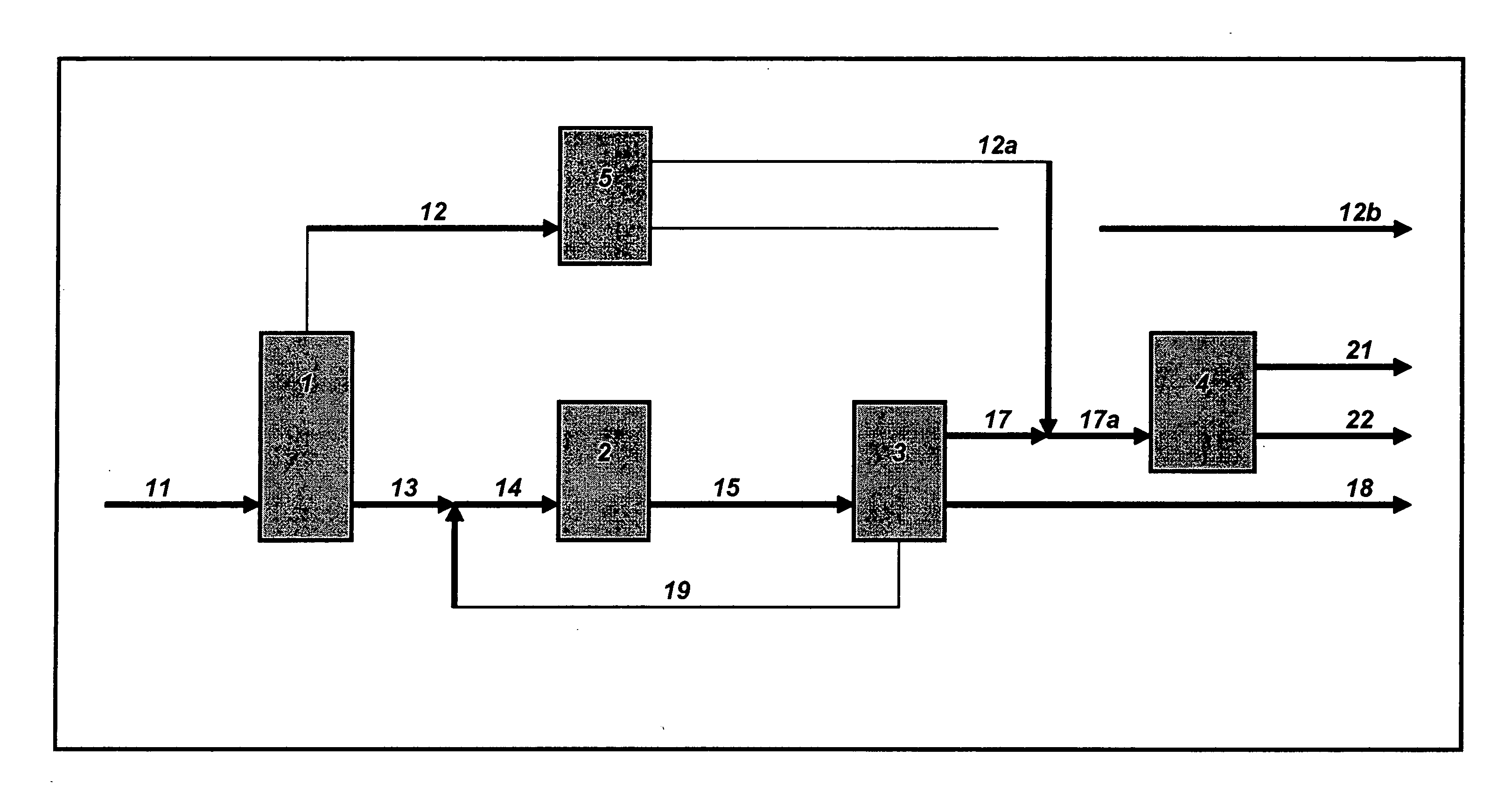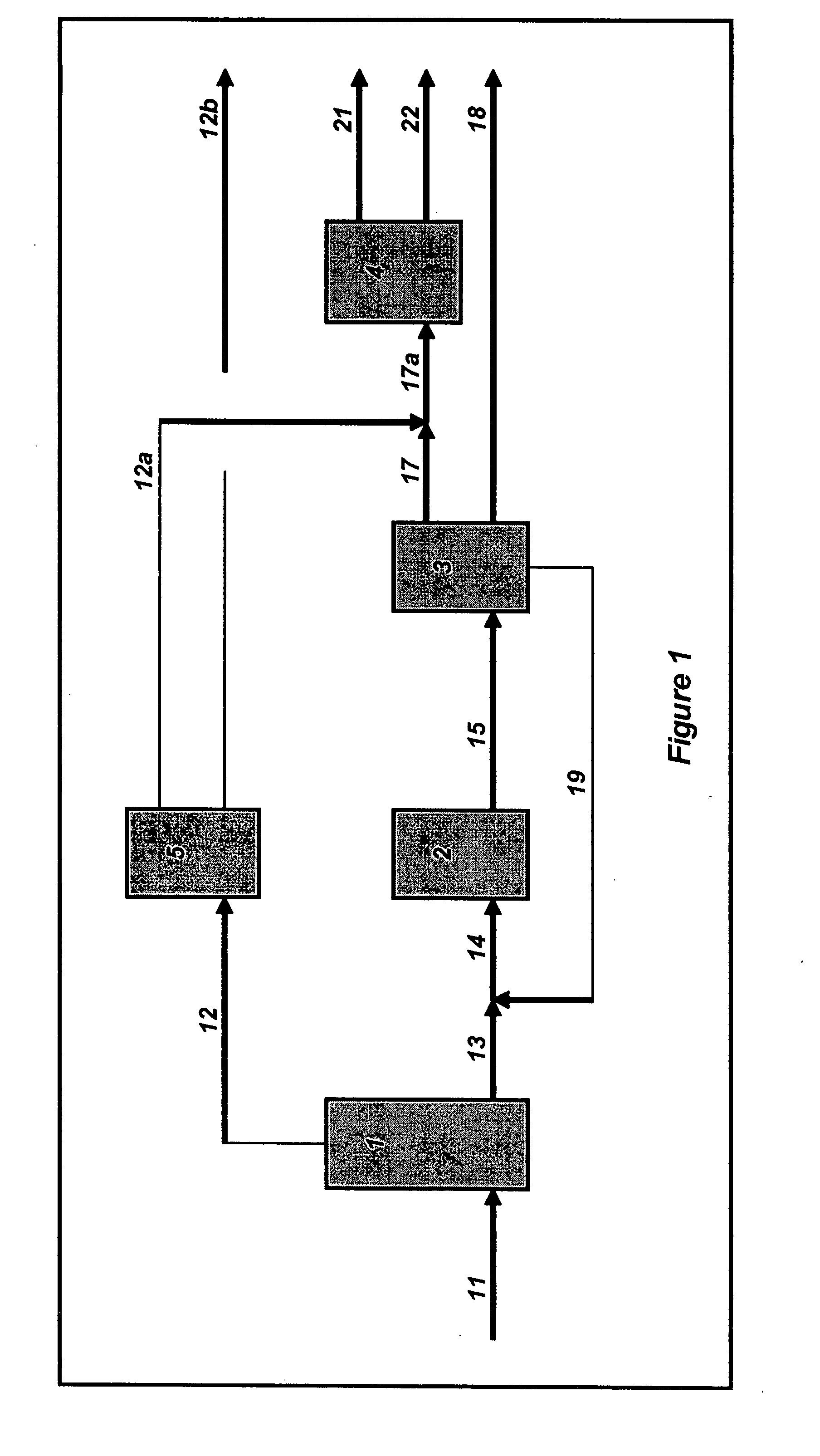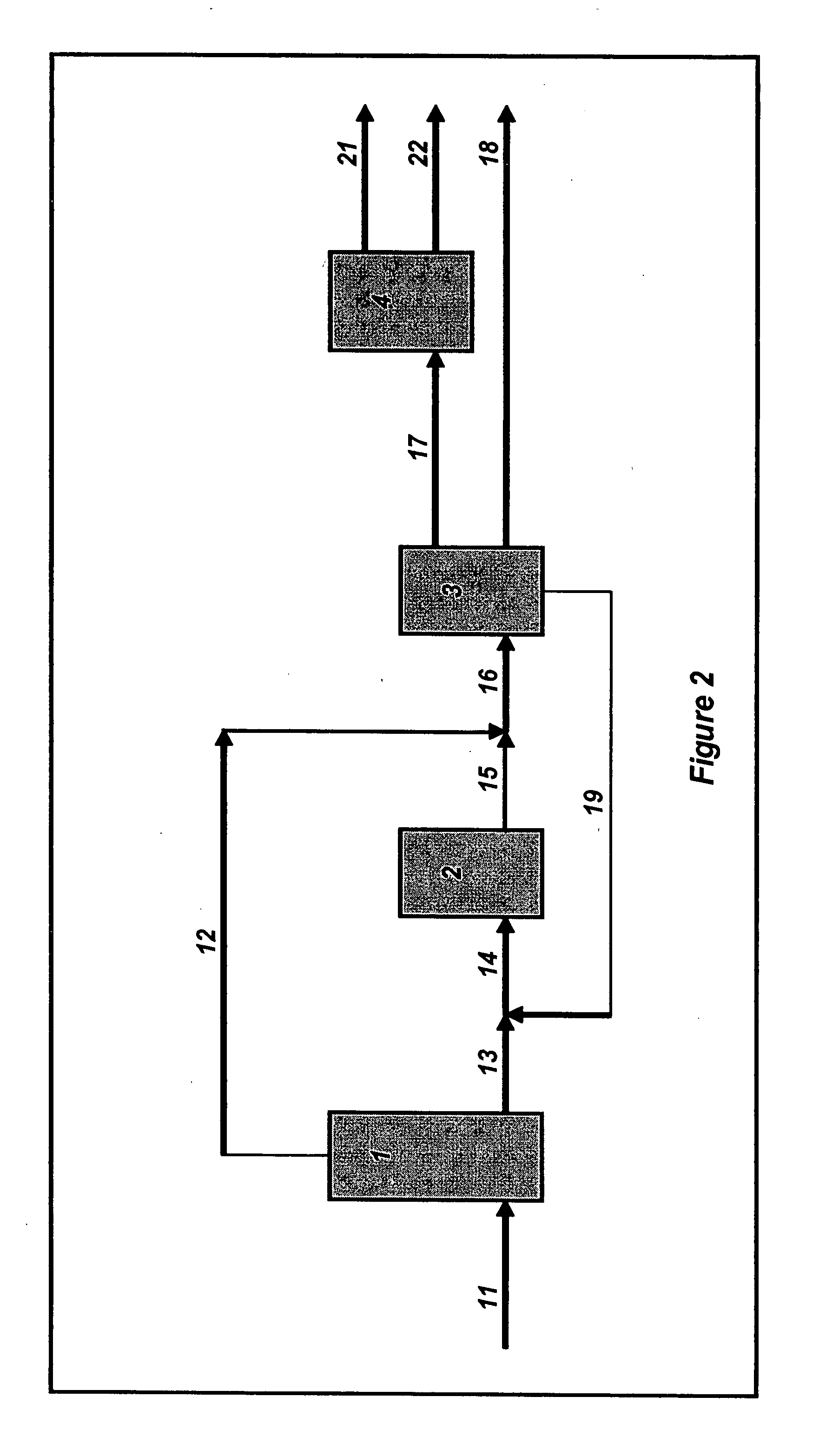Process for the preparation of and composition of a feedstock usable for the preparation of lower olefins
a technology which is applied in the field of preparation of lower olefins and compositions, can solve the problems of reducing the versatility of synthetic naphthas as cracking feedstocks, increasing complexity of chemical reactions that occur during thermal cracking, and high content of unsaturated compounds, so as to achieve superior thermal cracking performance and lower yield
- Summary
- Abstract
- Description
- Claims
- Application Information
AI Technical Summary
Benefits of technology
Problems solved by technology
Method used
Image
Examples
example 1
Low Cracking Severity—P / E ratio 0.59-0.60
[0077] The experimental results shown in Table 4 indicate that the Naphtha 2 resulted in 2.2% mass more ethylene that the fully saturated Naphtha 1—33.0% and 32.3% mass respectively. Similarly, the propylene yield was 3.1% higher, 19.7% and 19.1% respectively. On the same basis, the combined yields of the commercially attractive lower olefins, i.e. ethylene, 20 propylene and butadiene, was 3.6% higher—57.2% and 55.2% mass respectively. Finally, the yield of undesirable combined liquid products (C5+ material) was 11.2% lower when processing Naphtha 2, 15.0% and 16.9% respectively.
example 2
High Cracking Severity—P / E ratio 0.50-0.51
[0078] The experimental results shown in Table 4 indicate that the Naphtha 2 resulted in 1.7% mass more ethylene that the fully saturated Naphtha 1—36.3% and 35.7% mass respectively. Similarly, the propylene yield was 3.9% higher, 18.5% and 17.8% respectively. On the same basis, the combined yields of the commercially attractive lower olefins, i.e. ethylene, propylene and butadiene, was 2.9% higher—59.4% and 57.7% mass respectively. Finally, the yield of undesirable combined liquid products (C5+ material) was 15,3% lower when processing Naphtha 2, 12.2% and 14.4% respectively.
TABLE 4Steam Cracking Performance of Synthetic Hydrocarbon FeedsNaphtha 1Naphtha 2Propylene-to-Ethylene ratiowt0.590.500.600.51Average Coil Temp., ° C.° C.868892877896Product Yields (mass %)Ethylenewt%32.335.733.036.3Propylenewt%19.117.819.718.51,3-Butadienewt%3.84.24.54.7Total Lower Olefinswt%55.257.757.259.4Other Olefinswt%8.46.27.65.8Hydrogenwt%0.70.80.70.8Methane...
example 3
Preparation of a Semi-synthetic Naphtha
[0079] A semi-synthetic naphtha whose olefin content is similar to that of the olefinic Naphtha 2 can be prepared by blending the FT straight run Naphtha 3 fractionated from the FT condensate with a highly paraffinic conventional petrochemical naphtha. The composition of two of 10 these products is presented in Table 5.
TABLE 5Components of a Semi-synthetic Olefinic NaphthaParaffinicBlend (% mass of Naphtha 3)NaphthaNaphtha20%40%50%60%80%3Density,0.6600.6690.6790.6840.6890.6990.710kg / L (20° C.)Total sulphur,ppmComposition, % wtParaffins93.085.377.673.769.862.154.4Naphthenics5.54.43.32.72.21.10.0Aromatics1.51.20.90.80.60.30.0Olefins0.07.014.017.521.028.035.0Oxygenates0.02.14.35.36.48.510.7Total100.0100.0100.0100.0100.0100.1100.1
[0080] It is evident that, in this case, the target of ca 20% olefins is obtainable for blends of ca 55% Naphtha 3 with the balance being a highly paraffinic petrochemical naphtha.
PUM
| Property | Measurement | Unit |
|---|---|---|
| pressure | aaaaa | aaaaa |
| temperature | aaaaa | aaaaa |
| residence time | aaaaa | aaaaa |
Abstract
Description
Claims
Application Information
 Login to View More
Login to View More - R&D
- Intellectual Property
- Life Sciences
- Materials
- Tech Scout
- Unparalleled Data Quality
- Higher Quality Content
- 60% Fewer Hallucinations
Browse by: Latest US Patents, China's latest patents, Technical Efficacy Thesaurus, Application Domain, Technology Topic, Popular Technical Reports.
© 2025 PatSnap. All rights reserved.Legal|Privacy policy|Modern Slavery Act Transparency Statement|Sitemap|About US| Contact US: help@patsnap.com



